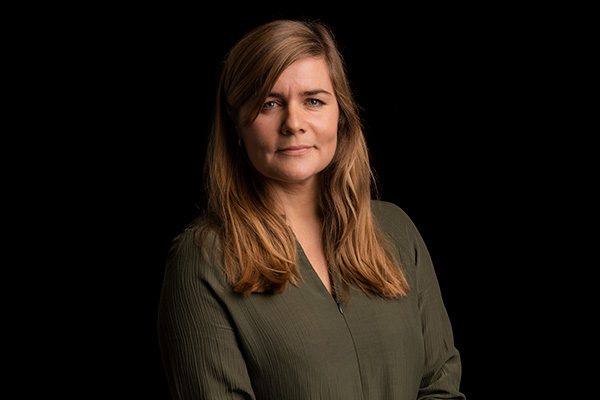Katrine Schjoldager
Research leader

Project title
Exploring the functional and structural consequence of LRP glycosylation - The sweet spot of receptor mediated endocytosis
What is your project about?
The low-density lipoprotein receptor (LDLR) and related proteins (LRPs) are essential multi-ligand, fast- recycling endocytic receptors controlling uptake of lipids, vitamins, enzymes and neuropeptides and dysregulation is closely tied to neurogenerative and kidney diseases. The mechanisms behind ligand selection, intracellular trafficking and disease development are poorly understood. We recently discovered that LDLR and LRPs are O-glycosylated in the ligand binding domains and that loss of O-glycosylation of LRP2 result in impaired kidney function in mice. The responsible glycosyltransferase (GALNT11), that adds sugars to LDLR and LRPs, is highly expressed in the brain choroid plexus (CP) and in kidney proximal tubule (PT) cells and is linked to both kidney disease and a locus for Alzheimer’s, suggesting that O-glycans play key roles in LRP function. Here, I aim to provide mechanistic and structural insights into how O-glycosylation regulates LRP1/2 function, develop CP and PT conditional Galnt11 ko mouse models to demonstrate causal roles in disease and identify LRP glycopeptide biomarkers for chronic kidney disease and Alzheimer’s disease.
How did you become interested in your particular field of research?
The first time I saw an electron micrograph of a cell that was completely covered in glycans (what we call glycocalyx) I was hooked and wanted to understand what this glycocalyx was made of. I quickly realized that this layer surrounds all our cells and is composed of highly variable sugar molecules and started my career by figuring out which sugar molecules are attached to which proteins. Now my research is focused on how these sugar molecules change the way our cells and proteins work in sickness and in health.
What are the scientific challenges and perspectives in your project?
A major challenge in my field, Glycobiology, is the complex nature of glycans which, from a technical perspective, makes it difficult to study them. Another challenge is the broad physiological involvement of the LDLR and LRP receptors – they have different tissue expression profiles and carry out different physiological functions spanning across many scientific areas. In this project I established a strong interdisciplinary and international team to help the project succeed.
What is your estimate of the impact, which your project may have to society in the long term?
This project has high potential for ground-breaking insights into the basic biology of LDLR and LRPs with impact on multifactorial neurodegenerative and kidney diseases and potential opportunities for novel therapeutic interventions, diagnostic biomarkers, and patient stratification that will hopefully benefit society one day.
Which impact do you expect the Sapere Aude programme will have on your career as a researcher?
First, it is a huge honor to receive the Sapere Aude grant. Second, the grant allows me to explore a subject with fundamental importance for how we perceive the role of sugar molecules in regulating protein functions. Importantly, the grant will help me cement a line of research that can develop the next generation of glycobiologists.
Background and personal life
As a researcher the work-life balance is sometimes challenged – but the family always wins. I live outside Copenhagen with my husband and our two wonderful girls (7 and 12 years old). We all love the water and whenever we get the chance we go sailing.
View all research leaders here
Research institution
University of Copenhagen
Research field
Glycobiology
City of your current residence
Rudersdal
High school
Virum Gymnasium
